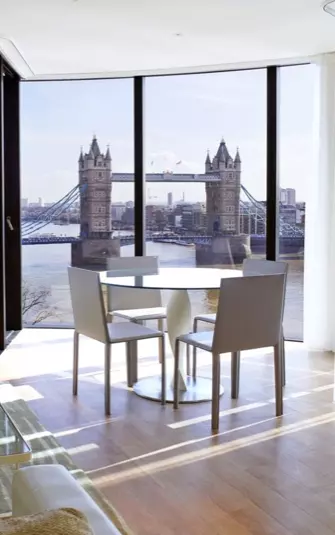View this post on Instagram
It’s a dream of many – visiting London and indulging in a trip full of iconic moments, history and incredible experiences. However, if you’ve never been to London before, how do you know where to start? Whatever your question, we’ve got it covered. This is your practical, insightful guide to visiting London for the first time.
How long should you visit London for?
London is great for a weekend city break. You can squeeze in a show, some sightseeing and get a taste of London life. However, this is an enormous city packed with world-famous landmarks and sights. To really do it justice, you’ll want to stay for a week, fortnight or more. Aparthotels make it more affordable for those longer stay in London.
Where should you stay in London?
View this post on Instagram
London is a staggering 20 miles across. You therefore need to choose where you stay wisely. Firstly, if you’re visiting London as a tourist for the first time, then we highly recommend you stay in central London. The last thing you want to do is have accommodation booked near Heathrow Airport and then discover you’ve got a long travel into the centre every day. Commuting into the centre can be costly and stressful. Even if you are desperate to ride ‘The Tube’ the novelty will soon wear off. However, even within central London there are lots of different places you can stay. Good options when you’re searching for London accommodation include Covent Garden, Westminster and Kensington. Don’t panic thinking that it will be prohibitively expensive to stay in central London. Choose a London serviced apartment and you’ll get all the comforts of a hotel with more space and a kinder price tag.
When is the best time to visit London?
View this post on Instagram
There isn’t really such a thing as the ‘best’ time to visit London. Each season and time of year brings something different. For example, ice-skating at Somerset House in the winter is equally as wonderful as paddling in the Princess Diana memorial fountain on a hot summer’s day. A trip to London is different whatever the weather too. Remember – this is England, we are prepared for rain! However, there are some times to avoid. London is a hugely popular city, receiving 30 million tourists each year. If you’re not a fan of crowds then you should aim to avoid the busiest times. These are bank holidays (including mainland European bank holidays) and the main school holidays in late July and August. Christmas month is also a very busy time, particularly in the main shopping areas.
What can I fit in on a trip to London?
London has exceptional public transport. This means you can see several sights or attractions in one day. However, it can be tiring. It’s realistic to accept that you will not be able to see everything you want to see in this one trip. All the more reason to come back again in the future! We recommend you don’t plan more than 2-3 attractions per day.
Do I need to book in advance when visiting London?
View this post on Instagram
It is possible to turn up to many attractions and, by joining a queue, you will get in. However, you will queue and that wastes time. However, it is also realistic to say that many attractions, restaurants and experiences do need to be booked in advance or you won’t get in. For example, it’s usually best to book tickets to a show or book a dining reservation. We also strongly recommend that you book your London accommodation in advance. Due to London’s popularity, you cannot guarantee a place to stay without some advance preparation. Furthermore, with many attractions, if you book online in advance you will get tickets much more cheaply. If you don’t book in advance, there is some risk you may not get to see what you want. However, some dedicated services exist for this reason. For example, the TKTS booth in Leicester Square sells on-the-day theatre tickets.
What are the top sights to see in London?
View this post on Instagram
London is crammed with iconic and enjoyable landmarks and attractions. You’ll need to plan your itinerary around the particular interests of your travelling party. If you’ve got teens then you’ll probably want to check out the London Dungeons, Madame Tussauds and the Making of Harry Potter. Families with young children will enjoy the Peter Pan playground in Kensington Gardens, the Natural History Museum, SEA LIFE Aquarium and Science Museum. Then, couples and adult groups will enjoy the London Eye, Tower of London and the View from the Shard. Everyone probably wants to grab some shots of Westminster Bridge, Big Ben and the Houses of Parliament. And let’s not forget Changing of the Guard at Buckingham Palace! Check out the Visit London website for more details on where you should visit in London.
What is free when visiting London?
View this post on Instagram
A trip to London can be expensive. However, there are also plenty of free London attractions. Many museums in London are free, such as the Natural History Museum, National Gallery, British Museum and Tate Modern. London has plenty of large and spacious parks and gardens which are also free to visit. Hyde Park, St James’ Park and Kensington Gardens are some favourites. The absolute must-see that is the Changing of the Guard is free to watch. You can find out more about when it is on here.
How can I save money on a trip to London?
View this post on Instagram
As we’ve already mentioned, choosing an apartment over a hotel will bring you large cost savings. However, there are also some other tricks to save money when visiting London. The London Pass is a way of getting priority and free entrance to some of the major sights such as Westminster Abbey. It also entitles you to use of the Thames River Cruise and the Hop-on Hop-off buses. Generally speaking, if you plan on visiting two or more attractions per day then this will help you save. There are other options too. An Oyster Card is an economical way to use London public transport. Also make sure you travel off-peak (after 9.30 am). For food, consider local pubs and markets rather than fine dining.
How do you travel around in London?
View this post on Instagram
As mentioned, an Oyster Card will allow you to travel cheaply on the Tube and buses. These transport options are easy and will get you from A to B quickly. You can also rent bikes really cheaply and you don’t need to return them to where you picked them up. You just find the closest drop off point to where you want to be – they are all over the city. There are also the famous black cabs. You’ll find ranks at all stations as well as at many of the main attractions. If you choose to stay in central London then you’ll also discover that you can walk from one attraction to another, as long as you plan your day well! Another useful way to do some journeys in London is on the River Thames. As well as the tourist cruises there is a River Bus, it’s a great way of seeing the sights as well as heading out to places such as the Royal Observatory at Greenwich.
Where should you eat in London?
View this post on Instagram
Long gone are the days when the British were mocked for their food! London is awash with fabulous dining experiences. Here are just a few suggestions:
- Have a taste of classic fish and chips.
- Check out London markets for street food options. Borough Market is great.
- Indulge in a fine dining experience at one of London’s 67 Michelin starred restaurants.
- Enjoy the hearty fare in a typical London gastro-pub.
- Sample the luxurious delights in Harrods food hall or in Fortnum & Masons.
- Don’t miss out on an afternoon tea experience.
How do you pay for things in London?
The currency is Pound Sterling and despite many attempts by tourists, this really does mean you can’t pay in Euros or American dollars. However, London is generally better than most international cities for easily paying by card. You should also be able to get cash out easily from an ATM. Tips in the UK are generally less expected than elsewhere in the world. The notable exception is in restaurants where tips are generally expected. You should tip around 10%. You may find in some restaurants, particularly if you are in a group, that a service charge will be added to your bill automatically. It is not usual to tip tour guides but some do.
What little things do I need to know when travelling to London?
Lastly there are a few other little helpful pieces of advice:
- UK plugs are unique and you will need a UK specific travel adaptor.
- Pavement pounding as a tourist in London is tiring so choose comfy shoes.
- Look right before you cross a road. In the UK they drive on the left.
- At zebra crossings you should be able to expect traffic to stop for you simply by standing next to them, you don’t need to step on to the crossing first.
- Always have an umbrella in your bag! London is known for rain!
It’s time to get excited about your trip to London and book your accommodation. Staying in a serviced apartment will give you a spacious base and privacy at the end of days spent sightseeing as well as putting you close to the action.




 WhatsApp Chat
WhatsApp Chat Send Enquiry
Send Enquiry